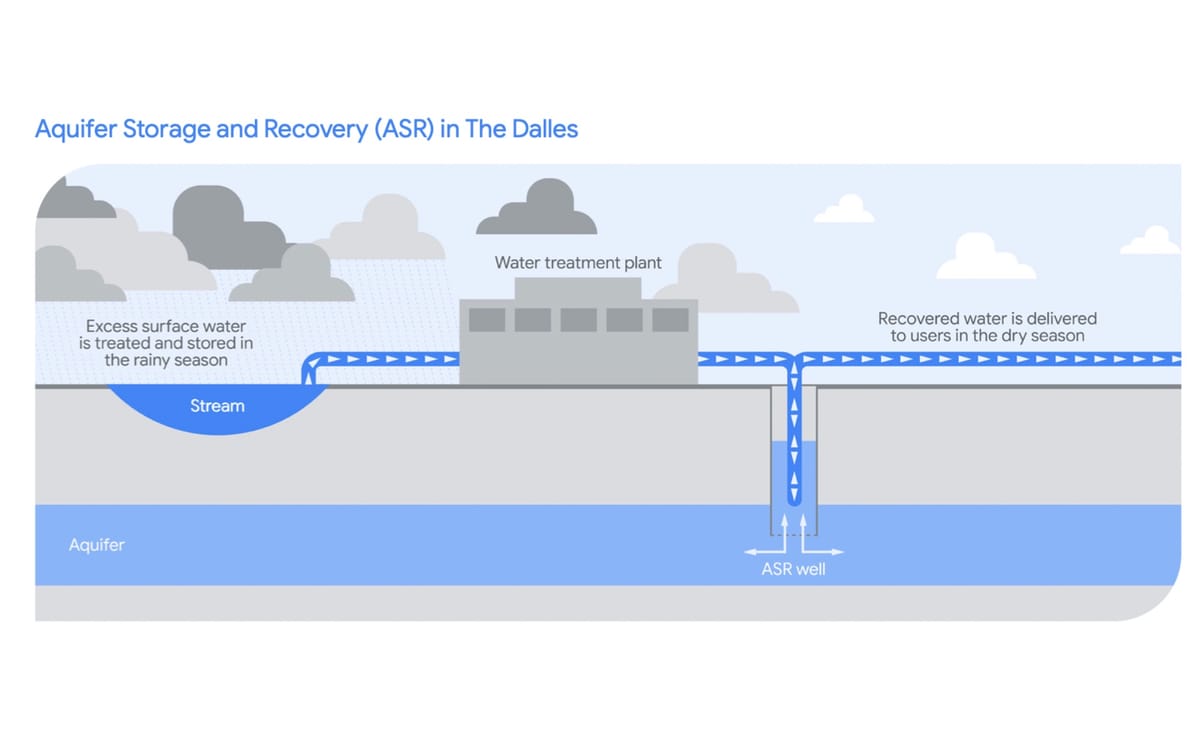Valuing Water Infrastructure for Sustainable Development Goals
Introduction: Integrating Water and Energy Systems for SDGs 6 and 7
A new framework addresses the intersection of water and energy infrastructure, driven by variable electricity rates and high demand charges. This initiative proposes leveraging water and wastewater assets for load flexibility and dispatchable generation, creating a critical synergy between SDG 6 (Clean Water and Sanitation) and SDG 7 (Affordable and Clean Energy). By optimizing energy use in water treatment, this approach supports the financial and environmental sustainability of essential public services.
A Unified Framework for Assessing Energy Flexibility
A novel set of metrics has been developed to value the load flexibility of water infrastructure. This framework facilitates direct comparison with other distributed energy storage technologies, such as batteries, thereby promoting innovation in infrastructure management in line with SDG 9 (Industry, Innovation, and Infrastructure).
- The metrics allow grid planners to assess the value of water infrastructure’s energy flexibility, contributing to a more stable and efficient grid, a key target of SDG 7.
- Water infrastructure managers can use the framework to quantify the financial benefits of flexible energy management, enhancing the economic viability and operational resilience of facilities central to SDG 6.
- This unified valuation enables both electricity and water asset managers to prioritize investments based on levelized cost comparisons, fostering integrated planning for sustainable communities as envisioned in SDG 11 (Sustainable Cities and Communities).
Application and Case Studies
The framework has been applied to assess the benefits of load flexibility and dispatchable biomethane production at diverse water and wastewater treatment facilities. A notable demonstration of this system was conducted at the Silicon Valley Clean Water wastewater treatment plant.
- The framework reveals the unique strengths and limitations of water system flexibility compared to other grid-scale energy storage solutions.
- It identifies high-value opportunities for the flexible load operation of water assets, maximizing their contribution to energy systems.
- The analysis underscores the critical role of electricity tariff structures and energy service markets in incentivizing the water sector’s participation in load flexibility, linking policy directly to the achievement of SDG 7 and SDG 13 (Climate Action).
Leadership and Broader Impact on Global Goals
This research is led by Professor Meagan Mauter of Stanford University, who directs the Water & Energy Efficiency for the Environment Lab (WE3Lab). The lab’s mission is to provide a sustainable water supply in a carbon-constrained world, directly addressing multiple SDGs.
- Developing desalination technologies: This work supports a circular water economy, advancing SDG 6 and SDG 12 (Responsible Consumption and Production) by creating resilient and less resource-intensive water sources.
- Coordinating decarbonized systems: Research into the coordinated operation of water and energy systems is fundamental to achieving the goals of SDG 7 and SDG 13.
- Supporting water-energy policies: The lab’s efforts in policy design and enforcement provide a foundation for scalable and effective governance of interconnected water and energy resources.
Professor Mauter also serves as the research director for the National Alliance for Water Innovation (NAWI), a DOE Hub focused on U.S. water security. NAWI’s work on energy-efficient and cost-competitive desalination technologies for non-traditional source waters is a direct contribution to the targets of SDG 6.
Analysis of Sustainable Development Goals in the Article
1. Which SDGs are addressed or connected to the issues highlighted in the article?
The article addresses several interconnected Sustainable Development Goals (SDGs) by focusing on the nexus of water, energy, and infrastructure. The primary SDGs identified are:
- SDG 6: Clean Water and Sanitation: The core subject is “water and wastewater infrastructure assets,” including wastewater treatment plants like the one in Silicon Valley. The mission of the WE3Lab to provide a “sustainable water supply” and the work of the National Alliance for Water Innovation on “U.S. water security issues” directly align with this goal.
- SDG 7: Affordable and Clean Energy: The article is heavily focused on energy, discussing “time of use electricity rates,” “dispatchable biomethane production,” “onsite electricity generation,” and the coordination of “decarbonized water and energy systems.” The entire framework is designed to improve energy management and integrate water systems with the grid as a clean energy resource.
- SDG 9: Industry, Innovation, and Infrastructure: The text centers on upgrading “water and wastewater infrastructure assets” through innovation. It proposes a “new set of metrics” and discusses “early-stage research and development of energy-efficient and cost-competitive technologies,” which are key components of building resilient and innovative infrastructure.
- SDG 11: Sustainable Cities and Communities: By improving the efficiency and sustainability of essential urban services (water and energy), the research contributes to making communities more sustainable. The coordination of water and energy systems is a critical aspect of integrated urban planning.
- SDG 12: Responsible Consumption and Production: The article promotes resource efficiency through concepts like a “circular water economy” and the use of “dispatchable biomethane” from wastewater. This represents a shift towards sustainable production patterns by turning waste into a valuable energy resource.
- SDG 13: Climate Action: The research aims to provide solutions for a “carbon-constrained world” by developing “decarbonized water and energy systems.” Improving energy efficiency and utilizing renewable sources like biomethane are direct actions to mitigate climate change.
2. What specific targets under those SDGs can be identified based on the article’s content?
Based on the article’s focus, the following specific SDG targets can be identified:
- Target 6.3: Improve water quality by… halving the proportion of untreated wastewater and substantially increasing recycling and safe reuse. The focus on “wastewater treatment facilities” and developing “desalination technologies to support a circular water economy” directly contributes to this target.
- Target 7.2: Increase substantially the share of renewable energy in the global energy mix. The article explicitly mentions “dispatchable biomethane production with onsite electricity generation” at wastewater facilities, which is a form of renewable energy generation.
- Target 7.3: Double the global rate of improvement in energy efficiency. The entire premise of the research, led by the “Water & Energy Efficiency for the Environment Lab (WE3Lab),” is to create metrics and systems that improve the energy efficiency of water infrastructure.
- Target 9.4: Upgrade infrastructure… to make them sustainable, with increased resource-use efficiency and greater adoption of clean and environmentally sound technologies. The proposed framework for valuing “water infrastructure load flexibility” is a tool to upgrade and operate this infrastructure more sustainably and efficiently.
- Target 12.2: Achieve the sustainable management and efficient use of natural resources. The development of a “unified framework for valuing water asset flexibility” enables managers to make investment decisions that lead to more efficient use of both water and energy resources.
3. Are there any indicators mentioned or implied in the article that can be used to measure progress towards the identified targets?
The article proposes a new framework of metrics, which themselves can serve as or lead to specific indicators for measuring progress. The following indicators are mentioned or strongly implied:
- Metrics for Valuing Load Flexibility: The “new set of metrics for valuing water infrastructure load flexibility” is a direct indicator. Applying these metrics allows for a quantitative assessment of how much energy flexibility a water facility can provide to the grid, measuring progress towards energy efficiency (Target 7.3) and sustainable infrastructure (Target 9.4).
- Levelized Cost Comparisons: The article states that the framework enables “levelized cost comparisons across their respective portfolios.” This financial indicator can measure the cost-competitiveness of these sustainable technologies, tracking progress towards the adoption of clean energy and efficient infrastructure (Targets 7.3 and 9.4).
- Volume of Onsite Electricity Generation: The amount of electricity generated from “dispatchable biomethane production” is a clear, quantifiable indicator for measuring the increased share of renewable energy (Target 7.2) from the water sector.
- Financial Benefits from Flexibility: The ability of water managers to “assess the financial benefits of energy flexibility for their facility operation” serves as an indicator. Reduced electricity costs due to flexible operation would signify improved energy efficiency and resource management (Targets 7.3 and 12.2).
- Adoption Rate of New Technologies: The application of the framework at the “Silicon Valley Clean Water wastewater treatment plant” and the development of “energy-efficient and cost-competitive technologies” by the National Alliance for Water Innovation imply an indicator related to the adoption rate of these new systems and technologies by the water sector.
4. Summary Table of SDGs, Targets, and Indicators
| SDGs | Targets | Indicators |
|---|---|---|
| SDG 6: Clean Water and Sanitation | 6.3: Improve water quality and increase wastewater recycling and reuse. | Development and adoption of technologies for a “circular water economy.” |
| SDG 7: Affordable and Clean Energy | 7.2: Increase the share of renewable energy. | Amount of electricity generated from “dispatchable biomethane production.” |
| 7.3: Double the rate of improvement in energy efficiency. | Application of “metrics for valuing water infrastructure load flexibility” and reduction in electricity costs. | |
| SDG 9: Industry, Innovation and Infrastructure | 9.4: Upgrade infrastructure to be more sustainable and resource-efficient. | Number of water facilities adopting the new energy management framework; “levelized cost comparisons” showing improved efficiency. |
| SDG 12: Responsible Consumption and Production | 12.2: Achieve sustainable management and efficient use of natural resources. | Assessment of “financial benefits of energy flexibility,” indicating more efficient resource use. |
| SDG 13: Climate Action | 13.2: Integrate climate change measures into policies and planning. | Development and coordination of “decarbonized water and energy systems.” |
Source: engineering.ucdavis.edu







